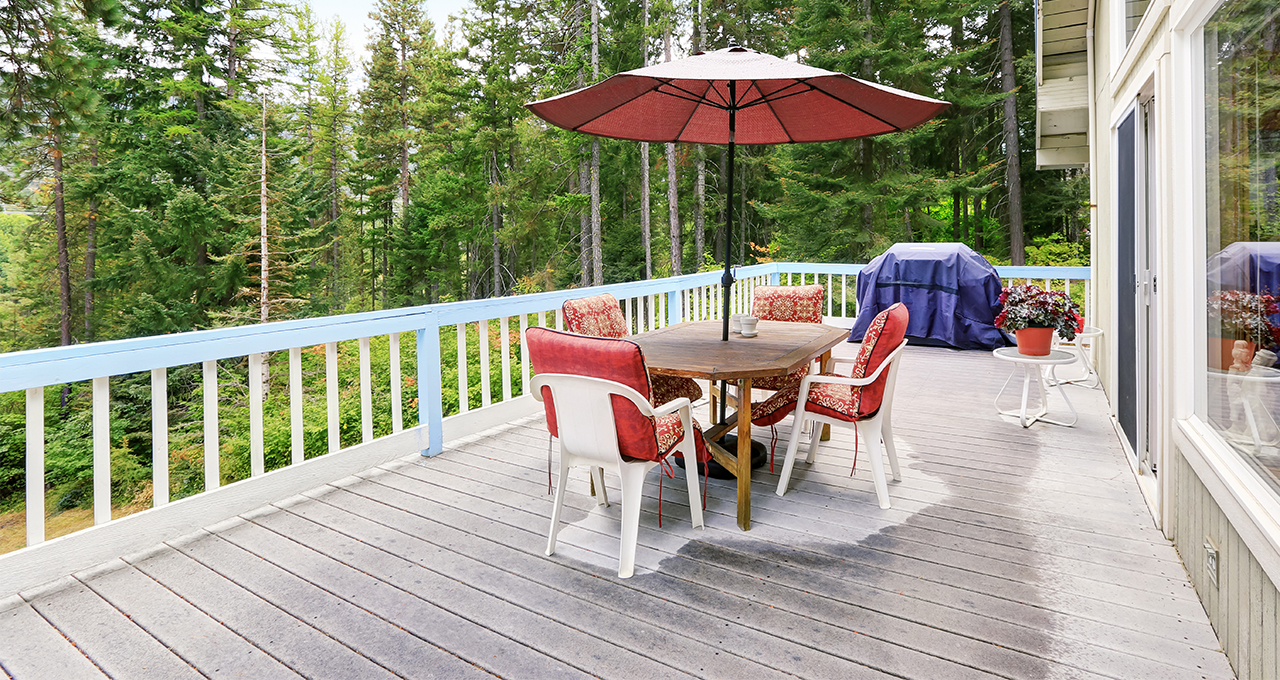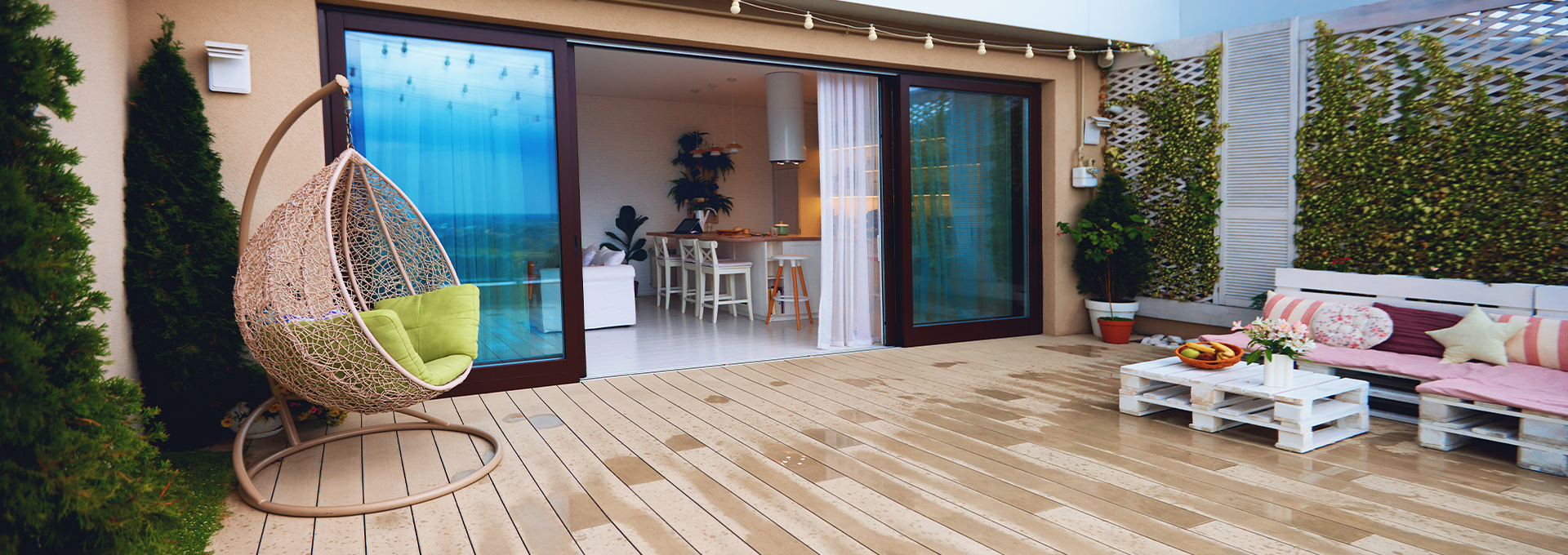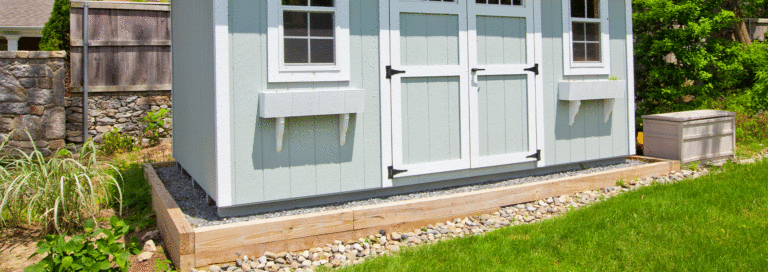It is no secret that adding a deck to your home also adds value. Some experts even estimate a 10% financial value increase with good quality decking! However, when it comes to making the choice, value may come from other considerations. The most important for many people? Safety. Which brings us onto the key question of this post: is composite decking slippery?
In this guide, we will cover:
- What is Composite Decking?
- How Do We Measure Slipperiness?
- Composite Decking: Is It Slippery?
- How To Maximise Composite Decking Slip-Resistance
- Final Thoughts
What is Composite Decking?
Before we get onto if it is slippery or not, it is useful to first consider what composite decking is, and how it differs from traditional wood options.
Put simply, composite decking is a manufactured product that contains a mix of wood, plastic, and bonding agents. For this reason, it is also known in the industry as WPC, or wood-plastic composite.
Given the mix of materials, composite decking has many key benefits that make it a wonderful choice, including low maintenance and a natural look. Not to mention the wide range of styles, colours and finishes available. However, the main benefit that makes composite decking so attractive is its reputation for slip resistance. More on that in just a moment!
How Do We Measure Slipperiness?
But first, how would we even know if composite decking is slippery? Is ‘slipperiness’ even measurable? In fact, it is. The Health and Safety Executive recommends the Pendulum Swing test.
This method works by replicating a pedestrian heel striking a surface in a dynamic way, as seen in the image below, where ‘A’ represents the foot and ‘B’ the surface. The test is repeated on various levels of wet floor, from dry to completely wet. An average of these findings is then taken to create a Coefficient of Friction (or CoF). Typically speaking:
- A high slip potential is defined as a CoF of 0-24.
- A medium slip potential is defined as a CoF of 25-35.
- A low slip potential, which is what we are aiming for, is defined as a CoF of 36 or above.

Source: Pendulum Test
Is Composite Decking Slippery?
Now onto what you have all been waiting for. Is composite decking slippery?
The short answer is no, not really. Unlike wood decking which requires various non-slip products to improve its grip, composite decking materials are manufactured to provide greater traction, and in turn, slip resistance.
Most composite decking will have next to no levels of slipperiness in dry conditions. But, is composite decking slippery when wet?
Compared to wood alternatives, the answer is also no. This is largely because of the qualities of the composite material as compared to timber. Composite material is less water-absorbent, meaning that it is less likely to be saturated with water, which can lead to ice. Plus, the gaps in between composite boards allow for an efficient system of water run-off, preventing pooling in the first place. Wood equivalents are also vulnerable to expansion and contraction with moisture and temperature changes, particularly if they have not been treated properly, which is another cause for ice build-up. Composite decking fortunately does not share this problem!
Non-Slip Does Not Mean Impossible-Slip!
That being said, the non-slip properties of composite decking should not be confused for a mythical property of impossible-slip. Composite decking is designed to reduce the risk of slipping, but the chances are never zero. This is especially true if the decking is not well-maintained.

How To Maximise Composite Decking Slip-Resistance
In order to maximise the non-slip nature of composite decking, maintenance and additional care should not be overlooked. So, grab the broom and cleaning solution, and let’s explore how to make your composite decking even less slippery!
Maintenance
The most important of our tips, proper maintenance will maximise not only the anti-slip qualities, but also the overall longevity of your composite decking.
Rotting leaves can result in the growth of lichen, mildew, and algae, all of which will increase the slip risk, especially when the decking becomes wet. For this reason, keeping the decking clear of debris and dirt is essential. Make sure to regularly sweep the decking, and use warm, soapy water to tackle dirt. A rinse with distilled white vinegar and baking soda will then help to finish the process.
In snowy and icy conditions, decking can become an even bigger safety hazard, even with composite decking’s base anti-slip characteristic. The best thing to do in these conditions is remove the snow before it turns to ice. Use a plastic or rubber shovel to effectively remove the snow and protect your decking from damage.
Textured Finishes
Composite deck boards often come in multiple different textures, with varied patterns of grooves and embossing. These textures work wonders for traction, so whilst walking on the decking your feet will have a much firmer grip on the material. Certain brands may also offer extra features on the boards themselves, such as the textured strips on Millboard Lasta-Grip Decking.
Drainage
For both composite and wood, proper drainage is essential to ensure the decking remains less slippery, particularly in the autumn and winter seasons where rain dominates the weather forecast. To prevent water from pooling on the decking surface, consider a slight slope to help direct the water. If you’re looking to install composite decking around a pool, this is a particularly useful tip!
A Perpendicular Layout
When thinking about the design and layout of your composite decking, consider laying the decking boards perpendicular to the direction of footfall. Perhaps the least-known, but most-effective tip, the layout is effective due to the micro profile of the decking (or in simpler terms, the direction of the grain) working to create friction, rather than reduce it. And, as we have gathered, more friction results in less slipperiness.
Added Accessories
If you’re still worried about whether your composite decking is slippery, you can consider investing in some additional supplies like non-slip decking strips, tape, or oil. Strips are the most permanent of the three, having to be screwed into the decking, but tape tends to be more affordable and faster. Non-slip oils can be a great option if you’re looking for natural ingredients and to keep the appearance of your decking, but they do come with a higher price point.
Another option is to use heavy-duty rubber mats in areas that require more traction like walkways or steps, or even consider installing handrails or balustrades for extra support.
Wrapping Up
So, is composite decking slippery? With the right care, not really. It is certainly less slippery than alternatives like wood, but it can still be prone to slipping under certain conditions. To really make the most of your decking, look out for options with a textured surface, keep it clean, and ensure good drainage. A little maintenance will go an exceptionally long way when it comes to reducing slip risks, keeping your decking safe and stylish for years to come!
Looking for more information on composite decking? Get in touch, or explore our composite decking options, including composite decking kits for a simpler process. Alternatively, if you’re looking for more general advice, check out the rest of our blog.




